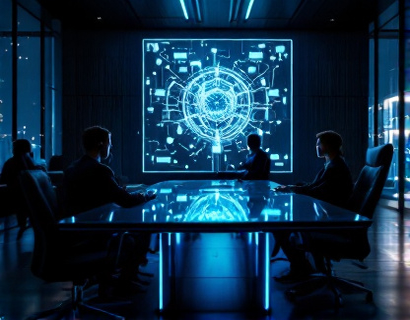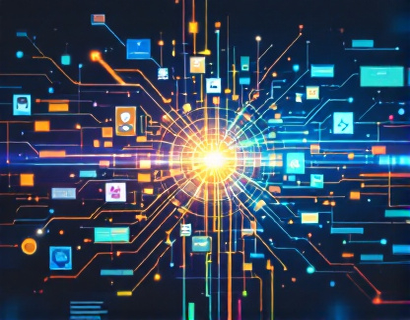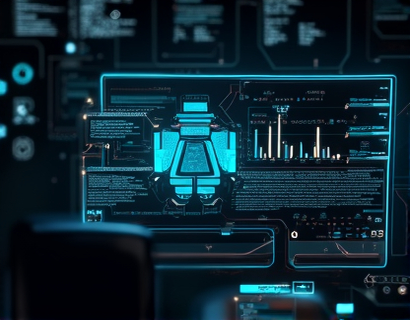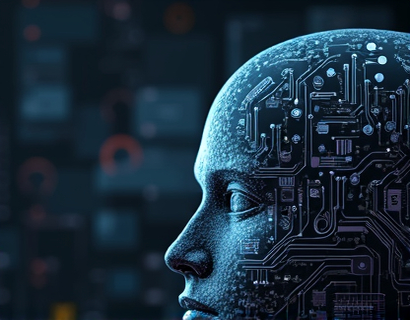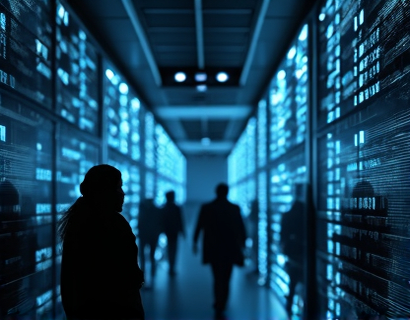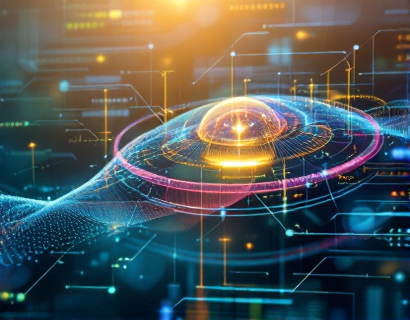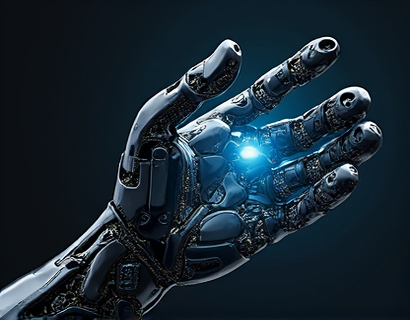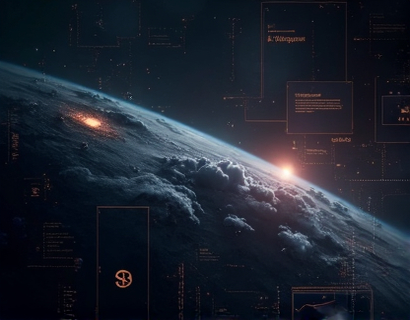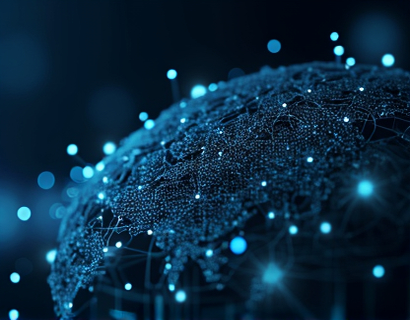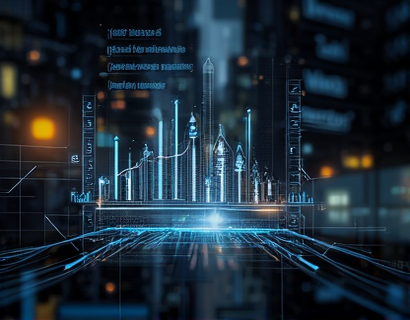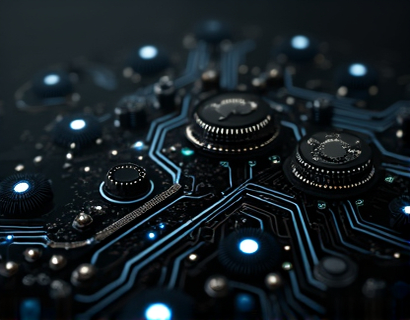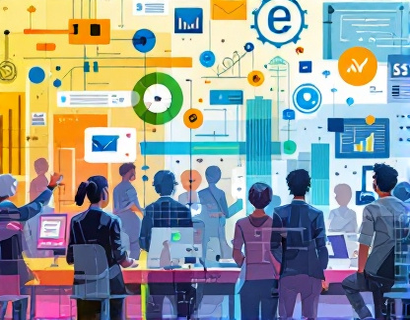Decentralized Productivity Enhanced: Integrating AI and Crypto for Next-Gen Digital Solutions
The intersection of cryptocurrency and artificial intelligence (AI) is giving rise to a new era of decentralized productivity tools and digital solutions. This fusion is not just a technological curiosity but a transformative force that is redefining how we approach tasks, manage workflows, and enhance productivity in the digital age. For tech enthusiasts and professionals alike, understanding the potential of this integration is crucial for staying ahead in a rapidly evolving landscape.
The traditional centralized models of productivity and task management are being challenged by decentralized alternatives that leverage blockchain technology and AI. These new systems promise enhanced security, transparency, and efficiency, making them attractive for both individual users and organizations. This article delves into the key aspects of this integration, exploring how AI and crypto are combining to create next-generation digital solutions that simplify tasks and boost productivity.
Understanding Decentralization and Its Benefits
Decentralization refers to the distribution of functions, processes, or activities away from a central authority. In the context of digital solutions, this means moving from centralized servers and control to a network of nodes that collectively manage and validate transactions or data. Blockchain technology is the backbone of this decentralized approach, providing a secure and transparent ledger that is immutable and resistant to tampering.
The benefits of decentralization are manifold. Firstly, it enhances security by eliminating single points of failure and reducing the risk of data breaches. Secondly, it promotes transparency as all transactions are recorded on a public ledger, accessible to all participants. Thirdly, it increases efficiency by automating many processes through smart contracts, which execute predefined actions when certain conditions are met.
Decentralization also fosters innovation by lowering barriers to entry. Developers and entrepreneurs can build and deploy applications without the need for centralized approval or intermediaries. This democratization of technology is leading to a proliferation of decentralized applications (dApps) across various domains, including productivity and task management.
AI in Decentralized Systems
Artificial intelligence, with its ability to process vast amounts of data, learn from patterns, and make predictions, is a natural fit for decentralized systems. When AI is integrated into decentralized platforms, it can enhance functionality, improve user experiences, and drive more intelligent decision-making. Here’s how AI complements decentralization:
- Enhanced Data Analysis: AI algorithms can analyze data from multiple decentralized sources, providing insights that would be impossible for humans to discern manually. This capability is particularly useful in productivity tools that need to process and interpret large datasets to offer personalized recommendations or automate complex tasks.
- Automated Decision-Making: AI can automate decision-making processes within decentralized systems, reducing the need for human intervention. For example, smart contracts can be programmed to execute actions based on AI-driven predictions, ensuring that tasks are completed efficiently and effectively.
- Improved User Interfaces: AI can enhance the user experience by creating more intuitive and responsive interfaces. Chatbots and virtual assistants powered by AI can provide real-time support and guidance, making decentralized tools more accessible and user-friendly.
- Fraud Detection and Security: AI algorithms can monitor decentralized networks for suspicious activities, enhancing security and preventing fraud. This is crucial for maintaining trust in decentralized systems, where the absence of a central authority means there is no central entity to oversee and protect users.
Case Studies: Decentralized Productivity Tools
Several decentralized productivity tools are already leveraging the power of AI to offer innovative solutions. These tools are redefining how we manage tasks, collaborate, and enhance productivity.
One notable example is a decentralized task management platform that uses AI to prioritize tasks based on user preferences and project requirements. This platform employs blockchain to ensure data integrity and security, while AI algorithms analyze user behavior to suggest optimal task sequences and deadlines. The result is a system that not only organizes tasks but also learns from user patterns to improve over time.
Another example is a decentralized collaboration tool that integrates AI-driven communication features. This tool uses natural language processing to facilitate seamless communication among team members, translating messages in real-time and summarizing discussions to keep everyone informed. The use of smart contracts ensures that all agreements and task assignments are transparent and enforceable, reducing the risk of miscommunication and misunderstandings.
Challenges and Considerations
While the integration of AI and decentralization offers significant benefits, it also presents several challenges that need to be addressed. One of the primary concerns is scalability. Decentralized systems can be slower and less efficient than centralized counterparts, especially when handling large volumes of data or transactions. However, ongoing advancements in blockchain technology and AI are gradually addressing these issues.
Another challenge is the user adoption curve. Decentralized tools often require users to adapt to new paradigms and interfaces, which can be a barrier for some. Education and user-friendly design are crucial to overcoming this hurdle. Additionally, regulatory uncertainties surrounding cryptocurrency and decentralized technologies can pose risks, although many experts believe that clear and supportive regulations will emerge as the industry matures.
Future Prospects
The future of decentralized productivity enhanced by AI and crypto looks promising. As more developers and organizations recognize the potential of this integration, we can expect a surge in innovative solutions that further simplify tasks and boost productivity. Here are some key trends to watch:
- Increased Adoption of Decentralized Finance (DeFi) Tools: DeFi platforms are already integrating AI to offer more sophisticated financial services, including automated trading, risk management, and personalized investment advice. These tools are set to become more prevalent in the productivity ecosystem.
- Enhanced Interoperability: Efforts to create standards and protocols that allow different decentralized systems to communicate and work together seamlessly will gain momentum. This interoperability will enable more comprehensive and integrated productivity solutions.
- Advanced AI Capabilities: As AI technology advances, we can expect more sophisticated AI-driven features in decentralized tools, such as predictive analytics, sentiment analysis, and more nuanced natural language processing. These capabilities will make tools more intuitive and effective.
- Greater Focus on User Experience: With the aim of broadening adoption, there will be a stronger emphasis on designing decentralized tools that are easy to use and integrate seamlessly into users' existing workflows. This includes more intuitive interfaces and better onboarding processes.
In conclusion, the integration of AI and decentralization is paving the way for a new generation of digital solutions that are more secure, transparent, and efficient. These tools are not just enhancing productivity but are also democratizing access to advanced technologies. For those interested in the future of digital innovation, keeping an eye on this intersection is essential.



